In this day and age, it’s easy to take our modern-day refrigerators for granted. We expect them to keep our food fresh and cold without giving them a second thought.However, it wasn’t always this way. Back in the early 1900s, refrigerators were a luxury item that only the wealthy could afford.
They were often large, ornate, and made of expensive materials such as wood or metal. In fact, early refrigerators were sometimes called “iceboxes,” as they relied on blocks of ice to keep food cold.
As time went on, refrigerators became more accessible to the middle class, and manufacturers began to experiment with different styles and designs.
The 1920s brought about the introduction of electric refrigerators, which revolutionized the industry and made refrigeration more efficient and affordable.
By the 1950s, refrigerators were a common household item, and manufacturers were competing to create the most stylish and eye-catching designs.
That’s where this collection of vintage refrigerator photos and ads comes in. These ads and photos offer a glimpse into the past, showcasing the evolution of refrigeration technology and the changing styles and trends of the times.
From art deco designs to sleek mid-century modern styles, these vintage refrigerators are sure to inspire and captivate.

An ad from 1956.
The history of artificial refrigeration began when Scottish professor William Cullen designed a small refrigerating machine in 1755.
Cullen used a pump to create a partial vacuum over a container of diethyl ether, which then boiled, absorbing heat from the surrounding air. The experiment even created a small amount of ice, but had no practical application at that time.
In 1805, American inventor Oliver Evans described a closed vapor-compression refrigeration cycle for the production of ice by ether under vacuum.
In 1820, the British scientist Michael Faraday liquefied ammonia and other gases by using high pressures and low temperatures, and in 1834, an American expatriate in Great Britain, Jacob Perkins, built the first working vapor-compression refrigeration system. It was a closed-cycle device that could operate continuously. The first practical vapor compression refrigeration system was built by James Harrison, a Scottish Australian. His 1856 patent was for a vapor compression system using ether, alcohol, or ammonia.
The first practical vapor compression refrigeration system was built by James Harrison, a Scottish Australian. His 1856 patent was for a vapor compression system using ether, alcohol, or ammonia.
He built a mechanical ice-making machine in 1851 on the banks of the Barwon River at Rocky Point in Geelong, Victoria, and his first commercial ice-making machine followed in 1854.

1928 General Electric Refrigerator.
In 1894, Hungarian inventor and industrialist István Röck started to manufacture a large industrial ammonia refrigerator which was powered by electric compressors (together with the Esslingen Machine Works).
Its electric compressors were manufactured by the Ganz Works. At the 1896 Millennium Exhibition, Röck and the Esslingen Machine Works presented a 6-tonne capacity artificial ice-producing plant.
In 1906, the first large Hungarian cold store (with a capacity of 3,000 tonnes, the largest in Europe) opened in Tóth Kálmán Street, Budapest, the machine was manufactured by the Ganz Works.

Vintage 1930 General Electric Refrigerator Print Ad.
In 1913, the first electric refrigerators for home and domestic use were invented and produced by Fred W. Wolf of Fort Wayne, Indiana, with models consisting of a unit that was mounted on top of an ice box.
His first device, produced over the next few years in several hundred units, was called DOMELRE. In 1914, engineer Nathaniel B. Wales of Detroit, Michigan, introduced an idea for a practical electric refrigeration unit, which later became the basis for the Kelvinator.
The self-contained refrigerator, with a compressor on the bottom of the cabinet was invented by Alfred Mellowes in 1916.

Vintage 1930 General Electric Refrigerator Print Ad.
Mellowes produced this refrigerator commercially but was bought out by William C. Durant in 1918, who started the Frigidaire company to mass-produce refrigerators.
In 1918, Kelvinator company introduced the first refrigerator with any type of automatic control. The absorption refrigerator was invented by Baltzar von Platen and Carl Munters from Sweden in 1922, while they were still students at the Royal Institute of Technology in Stockholm.
It became a worldwide success and was commercialized by Electrolux. Other pioneers included Charles Tellier, David Boyle, and Raoul Pictet. Carl von Linde was the first to patent and make a practical and compact refrigerator.
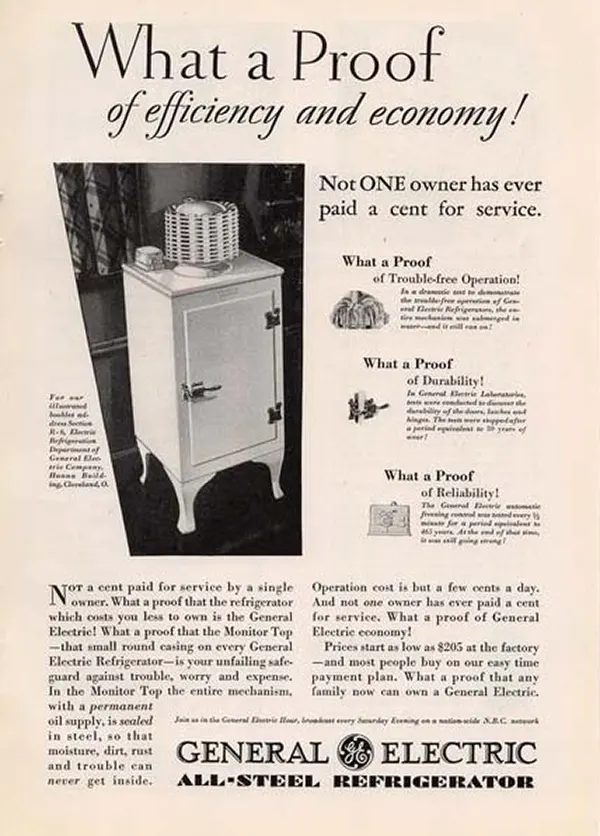
Vintage 1930 General Electric Refrigerator Print Ad.
These home units usually required the installation of the mechanical parts, motor, and compressor, in the basement or an adjacent room while the cold box was located in the kitchen.
By 1923, Kelvinator held 80 percent of the market for electric refrigerators. Also in 1923 Frigidaire introduced the first self-contained unit.
About this same time porcelain-covered metal cabinets began to appear. Ice cube trays were introduced more and more during the 1920s; up to this time freezing was not an auxiliary function of the modern refrigerator.
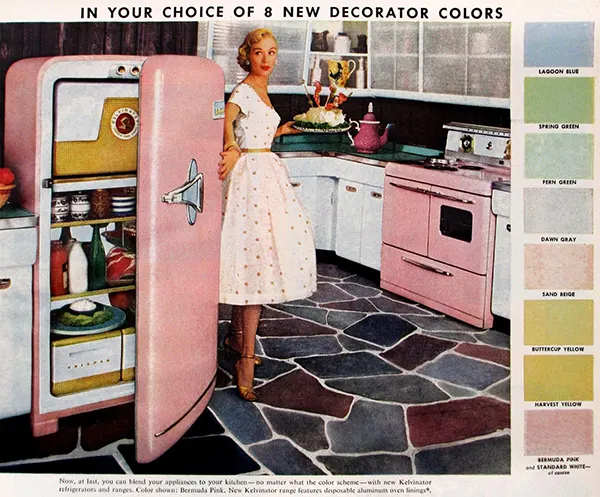
A refrigerator ad from the 1950s.
The first refrigerator to see widespread use was the General Electric “Monitor-Top” refrigerator introduced in 1927, so-called, by the public, because of its resemblance to the gun turret on the ironclad warship USS Monitor of the 1860s.
The compressor assembly, which emitted a great deal of heat, was placed above the cabinet, and enclosed by a decorative ring. Over a million units were produced.
The introduction of Freon in the 1920s expanded the refrigerator market during the 1930s and provided a safer, low-toxicity alternative to previously used refrigerants.
Separate freezers became common during the 1940s; the term for the unit, popular at the time, was deep freeze. These devices, or appliances, did not go into mass production for use in the home until after World War II.
The 1950s and 1960s saw technical advances like automatic defrosting and automatic ice-making. More efficient refrigerators were developed in the 1970s and 1980s, even though environmental issues led to the banning of very effective (Freon) refrigerants.

GE 1955 Wall Refrigerator.
In the early 1950s, most refrigerators were white, but from the mid-1950s to the present day, designers and manufacturers have put color onto refrigerators.
In the late-1950s/early-1960s, pastel colors like turquoise and pink became popular and brushed chrome plating (similar to a stainless steel finish) was available on some models.
In the late 1960s and throughout the 1970s, earth tone colors were popular, including Harvest Gold, Avocado Green, and almond. In the 1980s, black became fashionable. In the late 1990s stainless steel came into vogue.

In the 1860s, in-home refrigeration made a big leap forward with the introduction of the icebox, an early precursor to the refrigerator. By the 1890s, they were a common feature of middle-class homes. (Photo by University of Buffalo).

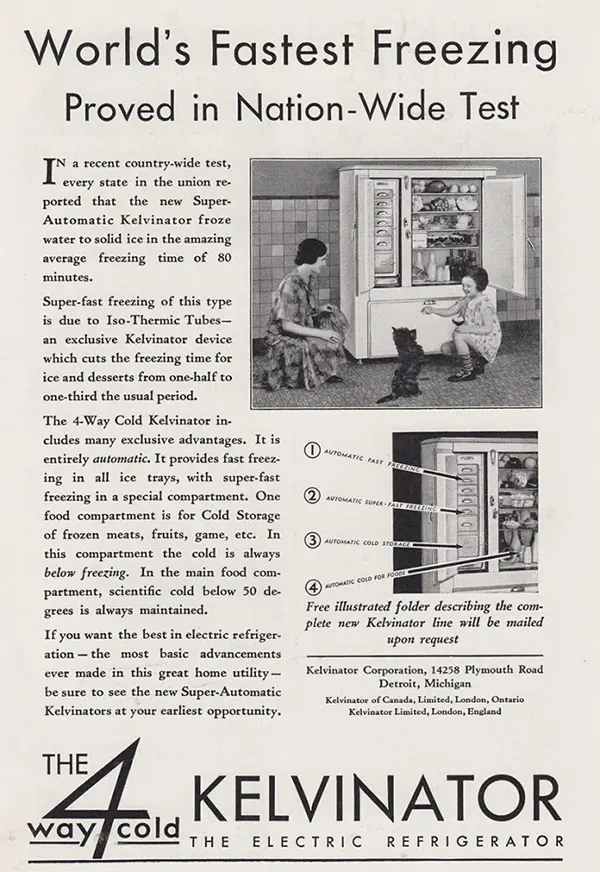
1930 Kelvinator Refrigerator 4-Way Cold Vintage Ad.

Frigidaire ad. (Photo by Saturday Evening Post)

Frigidaire ad. (Photo by Saturday Evening Post)

Vintage 1934 Frigidaire Refrigerator Kitchen Appliance.
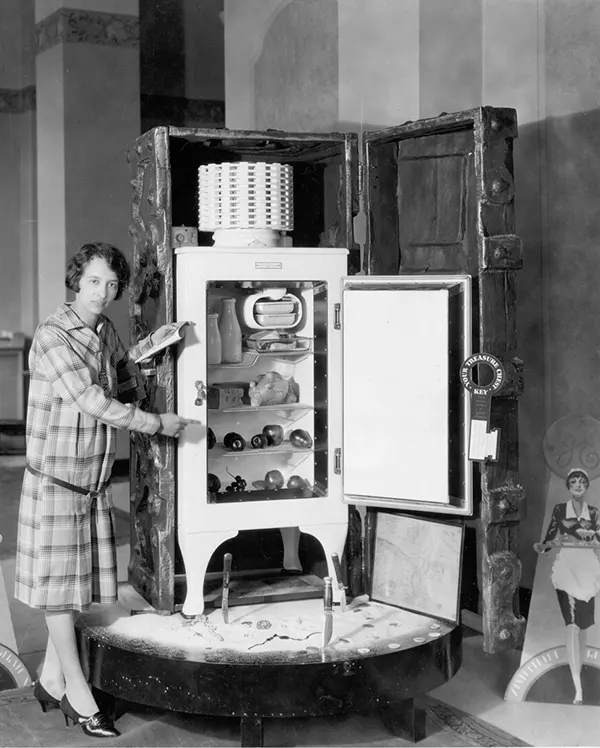
The Original GE Monitor Top Refrigerator From 1929.


Frigidaire ad from 1927.
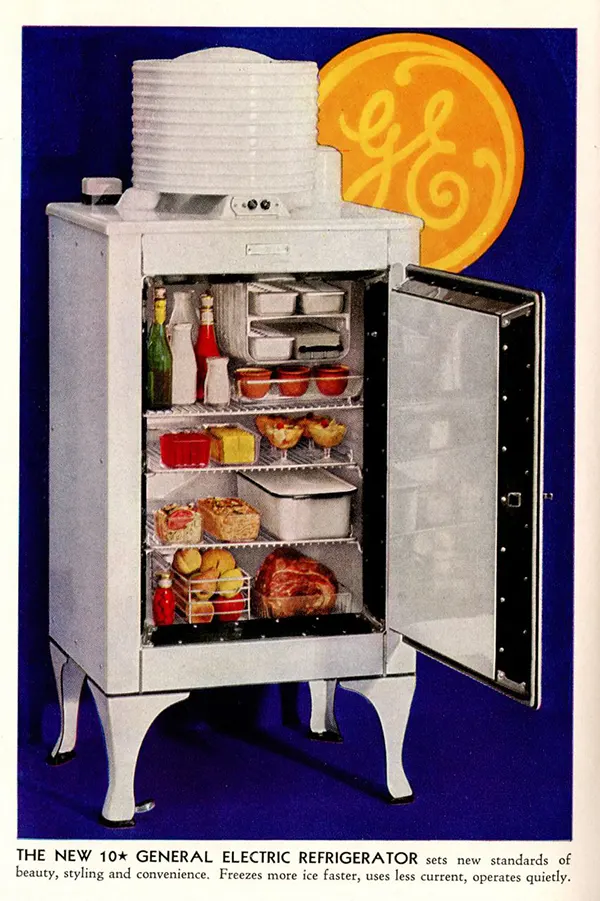

Philco refrigerator ad, 1944.
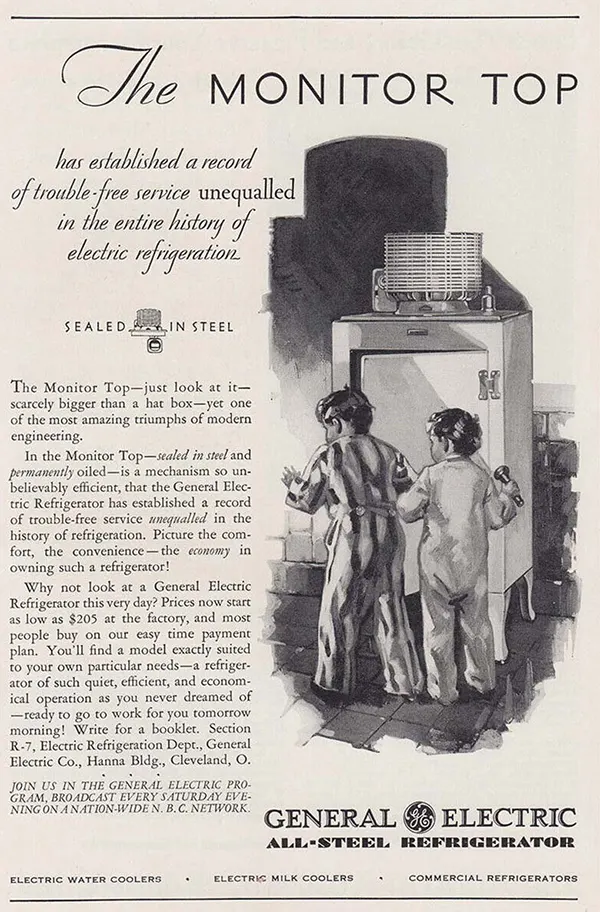
1930 General Electric Refrigerator.

1930 General Electric Refrigerator.
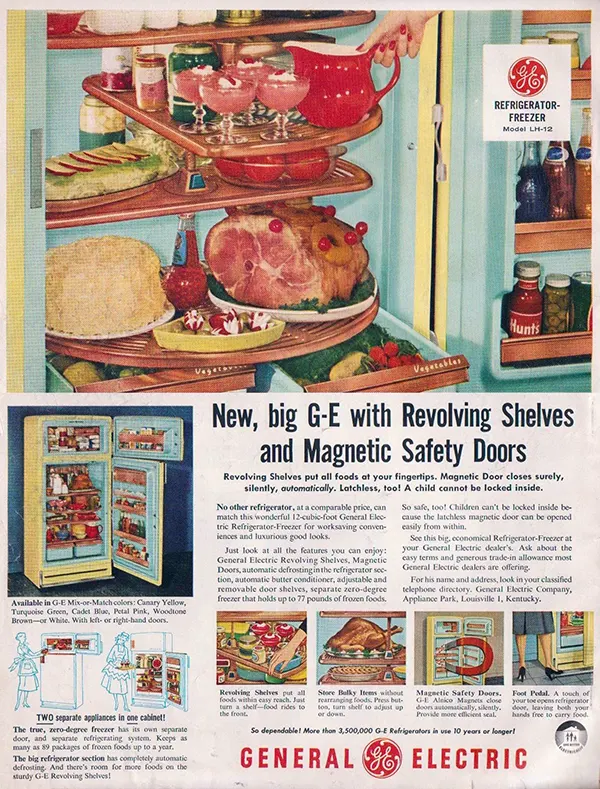
“The American Home” magazine, June 1956.

GE 1929 Steel-Refrigerator Ad.
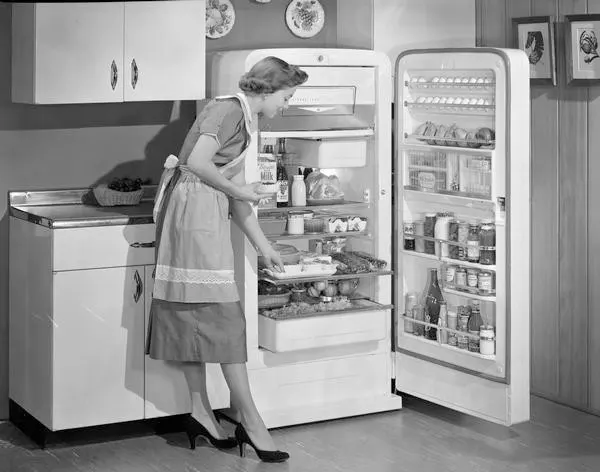
A woman demonstrates the features of a well-stocked International Harvester refrigerator in 1950. Image courtesy of the Wisconsin Historical Society.

An advertising photo of a woman holding open the door of an International Harvester refrigerator, circa 1950.

1964 Frigidaire Refrigerator Freezer Appliance Vintage Ad.

Vintage 1934 NorgeRollator Refrigerator Kitchen Appliance Ad.

1938 Norge Rollator Refrigerator Ad.

Frigidaire, 1948.
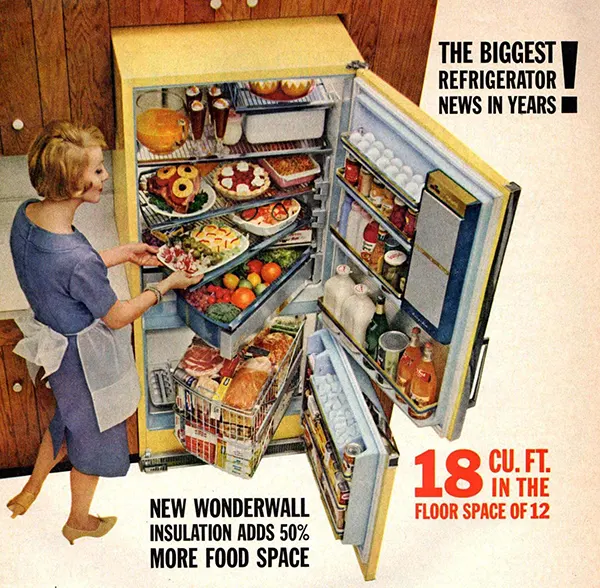
A refrigerator with swing-out shelves, 1960s.

A two-sided refrigerator that sits on the countertop, 1960s.
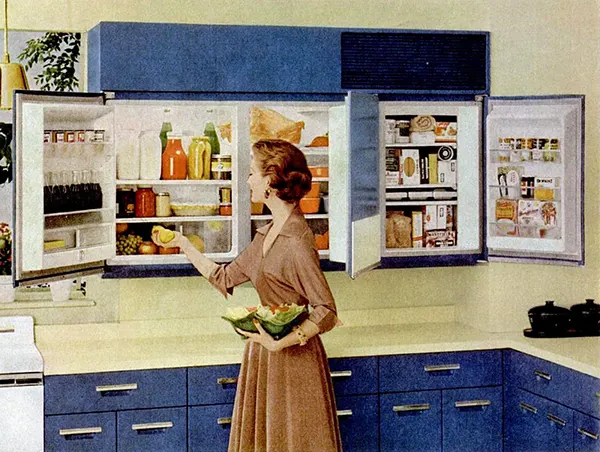
A wall-mounted fridge, 1950s.
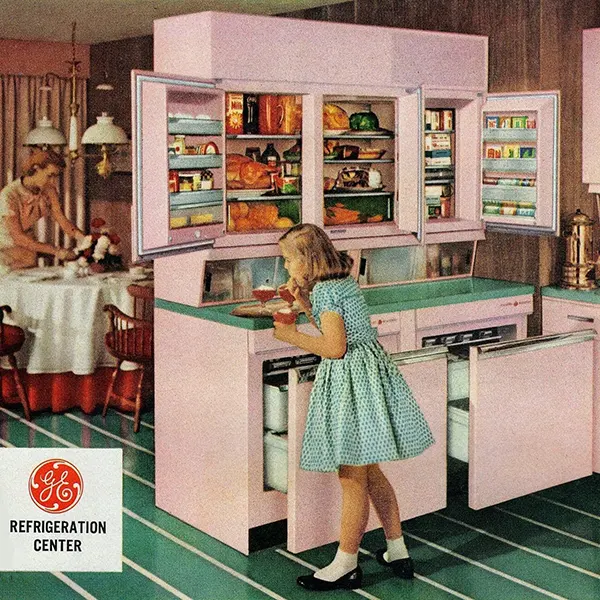
The GE Refrigeration Center from 1957.


International Harvester Refrigerator ad, 1950s.
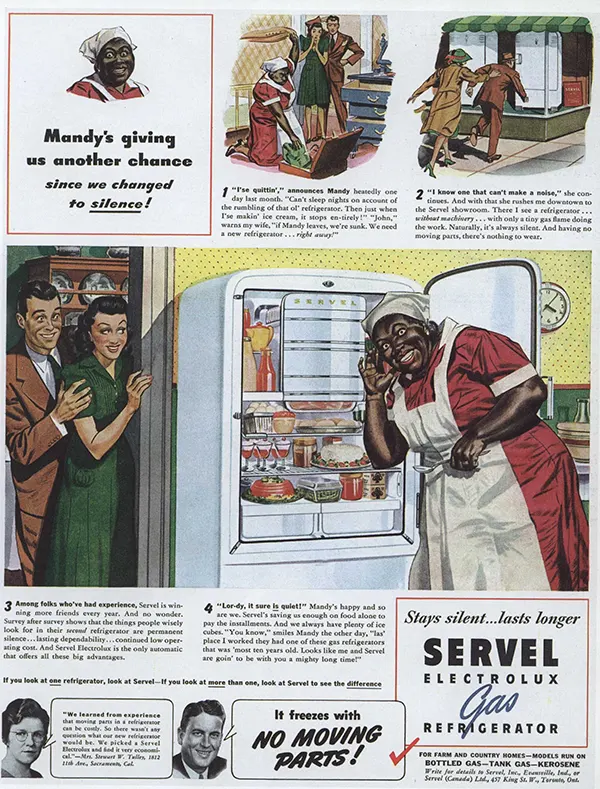
Ad for Servel Electrolux Gas Refrigerator 1941.

Frigidaire ad from 1940.





